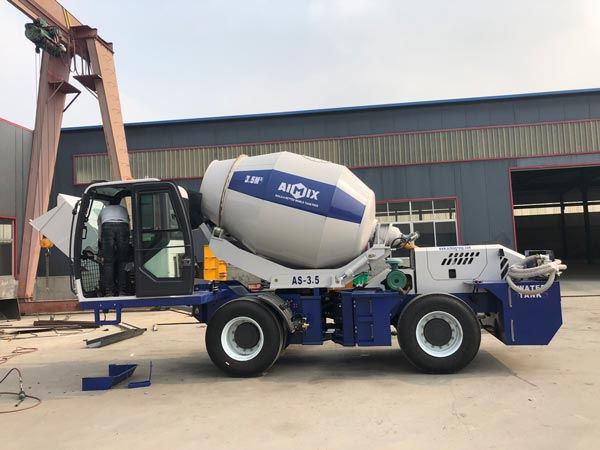Comparing Self Loading Cement Mixer for Sale with Traditional Methods
- aimixglobal2024
- 2024年12月9日
- 讀畢需時 3 分鐘
Construction projects require efficient and reliable methods for mixing cement. Traditionally, manual labor or stationary mixers have been used. However, self-loading cement mixers have gained popularity. This article compares self-loading cement mixers for sale with traditional methods. It highlights the benefits and drawbacks of each approach to help you make an informed decision.

Efficiency and Productivity
Self-loading cement mixers offer significant efficiency and productivity advantages over traditional methods. These mixers combine loading, mixing, and transporting functions, streamlining the process. This integration reduces the time and labor required for cement mixing.
Traditional methods often involve multiple steps and manual labor. Workers need to load materials, mix them, and transport the cement separately. This process is time-consuming and labor-intensive. Self loader truck for sale Philippines eliminates these inefficiencies, enhancing productivity.
Time Savings
Using a self-loading cement mixer saves time. The integrated functions allow for continuous mixing and pouring. This seamless process speeds up construction projects.
In contrast, traditional methods involve frequent stops and manual handling. Workers need to transport materials to the mixing site, mix them, and then transport the cement. This process is slower and less efficient. Time savings with self-loading mixers translate to faster project completion.
Labor Requirements
Self-loading cement mixers reduce labor requirements. These machines are designed for ease of use and require minimal training. One operator can handle the entire mixing and pouring process.
Traditional methods demand more labor. Workers need to handle different tasks, from loading materials to mixing and transporting cement. This increased labor requirement can lead to higher costs and potential delays. Self-loading mixers simplify the process, reducing labor needs.
Cost Implications
While self-loading cement mixers have a higher initial cost, they offer long-term savings. Reduced labor requirements and increased efficiency lower overall project costs. These mixers minimize downtime, further enhancing cost savings.
Traditional methods may seem cheaper initially, but they incur higher labor and time costs. Frequent repairs and maintenance of manual equipment also add to expenses. Investing in a self-loading mixer provides better value over time.

Quality and Consistency
Self-loading cement mixers ensure high-quality and consistent mixes. Automated controls and advanced weighing systems provide precise measurements. This accuracy results in uniform and reliable cement quality.
Traditional methods often rely on manual measurements. This approach can lead to inconsistencies in the mix. Variations in cement quality affect the strength and durability of the construction. Self-loading mixers offer superior consistency, enhancing the quality of the final product.
Flexibility and Mobility
Self-loading cement mixers offer greater flexibility and mobility. These machines can move easily across the construction site. They can access hard-to-reach areas, making them ideal for diverse projects.
Traditional methods are less flexible. Stationary mixers need to be set up at a specific location. Transporting cement to different areas of the site requires additional labor and time. Self-loading mixers provide the mobility needed for efficient and versatile operations.
Environmental Impact
Self-loading cement mixers have a lower environmental impact. These machines are designed for fuel efficiency and reduced emissions. Automated controls optimize the mixing process, minimizing waste.
Traditional methods often result in more waste and higher emissions. Manual mixing can lead to overuse of materials and increased waste. Self-loading mixers offer a more sustainable and eco-friendly option for cement mixing.
Conclusion
Comparing self-loading cement mixers for sale with traditional methods reveals significant advantages. Self-loading mixers offer enhanced efficiency, reduced labor requirements, and cost savings. They ensure high-quality and consistent mixes, providing better value for construction projects.
Traditional methods involve more labor, time, and potential inconsistencies. While they may have lower initial costs, they incur higher long-term expenses. Investing in a self-loading cement mixer provides superior performance and value.
By choosing a self-loading cement mixer, you enhance productivity, reduce costs, and ensure high-quality construction. These benefits make self-loading mixers a valuable investment for any construction project.




留言